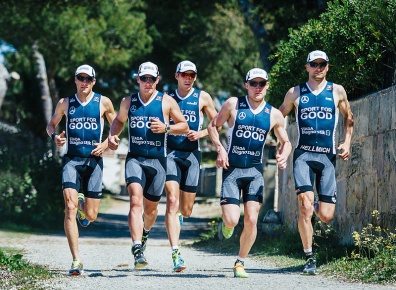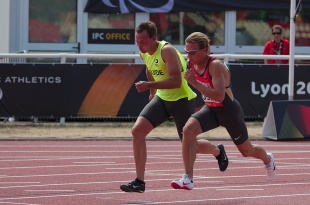Physical Activity and Men: Difference between revisions
mNo edit summary |
m (foto) |
||
| Line 1: | Line 1: | ||
[[File:Team Sport.jpeg|thumb| | [[File:Team Sport.jpeg|thumb|396x396px|center]] | ||
== Introduction == | == Introduction == | ||
Revision as of 10:11, 21 April 2018
Introduction[edit | edit source]
Physical Activity (PA) is defined as any bodily movement produced by skeletal muscles that requires energy expenditure - including activities undertaken while working, playing, carrying out household chores, travelling, and engaging in recreational pursuits. Regular moderate intensity physical activity – such as walking, cycling, or participating in sports – has significant benefits for health. For instance, it can reduce the risk of cardiovascular diseases, diabetes, colon and breast cancer, and depression. Moreover, adequate levels of physical activity will decrease the risk of a hip or vertebral fracture and help control weight[1]. According to World Health Organisation (WHO) globally man were slightly more physical active than women in 2010. Overall around 23% of adults aged 18 and over were not active enough in 2010 (men 20% and women 27%) [2].
More about gender differences in physical activity and sedentary time in this video below:
The benefits of physical activity in men with cardiovascular diseases[edit | edit source]
Add text here...
The benefits of physical activity in man with chronic diseases[edit | edit source]
The benefits of physical activity in men with prostate cancer[edit | edit source]
Bourke et al in a conducted systematic review, which included 16 randomised control trials investigated the effects of exercise on cancer-specific quality of life in men with prostate cancer. It was found high quality evidence that exercise interventions can improve cancer specific quality of life and cancer specific fatigue in men with prostate cancer at up to 6 months of follow up. Positive beneficial effects were also evident for lower body strength and aerobic fitness[3]. In a follow-up study has been found that physical activity was associated with lower overall mortality in men with prostate cancer. Both nonvigorous activity and vigorous activity showed significant results [4].
References[edit | edit source]
- ↑ http://www.who.int/topics/physical_activity/en/(Accessed 18 April 2018).
- ↑ http://www.who.int/mediacentre/factsheets/fs385/en/ (Accessed 18 April 2018).
- ↑ Bourke L, Smith D, Steed L, Hooper R, Carter A, Catto J, et al. Exercise for Men with Prostate Cancer: A Systematic Review and Meta-analysis.Eur Urol 2016;69:693-703.
- ↑ Kenfield S, Stampfer M, Giovannucci E, Chan J. Physical Activity and Survival After Prostate Cancer Diagnosis in the Health Professionals Follow-Up Study. Journal of Clinical Oncology 2011;29:726-732.








